
Hope for a huge, ancient and imperilled fish
First Nations are leading efforts to make sure lake sturgeon can find a home in...
It’s a strange arrangement: surrounded on all sides by provincial parkland, B.C.’s notorious ‘Doughnut Hole’ is a sensitive, unprotected pocket of land the size of Manhattan.
It’s also the location Imperial Metals is eyeing for a major new mine.
The B.C. mining company responsible for the Mount Polley disaster applied late last year for a five-year exploration permit for the area located between the Skagit Valley and E.C. Manning provincial parks and next to the headwaters of the Skagit River, Washington State’s prime chinook salmon river.
The application, which comes on the heels of a controversial decision by Crown corporation BC Timber Sales to allow clearcut logging last year in the Doughnut Hole, has incensed conservation and community groups on both sides of the border, which are accusing the province of breaking the 1984 High Ross Treaty between Canada and the U.S.
The treaty also forged the Skagit Environmental Endowment Commission, a watchdog group jointly funded by B.C. and Seattle’s public utility and designed to protect the integrity of the watershed.
Leo Bodensteiner, U.S. co-chair of the commission and professor of environmental science at Western Washington University, told The Narwhal he fears B.C. is not living up to its responsibility to protect the Skagit from development.
“There should not be a mine in the headwaters of the Skagit River and there should not be a mine by this company in the headwaters of any river,” Bodensteiner said.
“The actor in this case is Imperial Metals and, if you are familiar with the Mount Polley disaster, you know they are bad actors,” he said.
The Mount Polley copper and gold mine, northeast of Williams Lake, was the site of the 2014 catastrophic collapse of a tailings dam, which sent 25-billion litres of mine waste and sludge into nearby waterways.
An investigation found the collapse was caused by a badly designed dam with construction failing to account for glacial silt under the pond, but no fines have been levied or charges laid and mine waste is continuing to pollute Quesnel Lake.
Bodensteiner was part of a delegation of commissioners that met recently with Doug Donaldson, B.C.’s minister of forests, and separately with Michelle Mungall, B.C.’s minister of mines.
Donaldson told the delegation he would halt logging plans and look at decommissioning logging roads and restoring the area within the next two years, Bodensteiner said.
The ministry confirmed to The Narwhal that “all future logging plans are currently on hold.”
But many are left to wonder whether the hold is permanent or temporary.
The meeting with Mungall left the group less optimistic, Bodensteiner said, noting the Imperial Metals application is now being sent out for public comment.
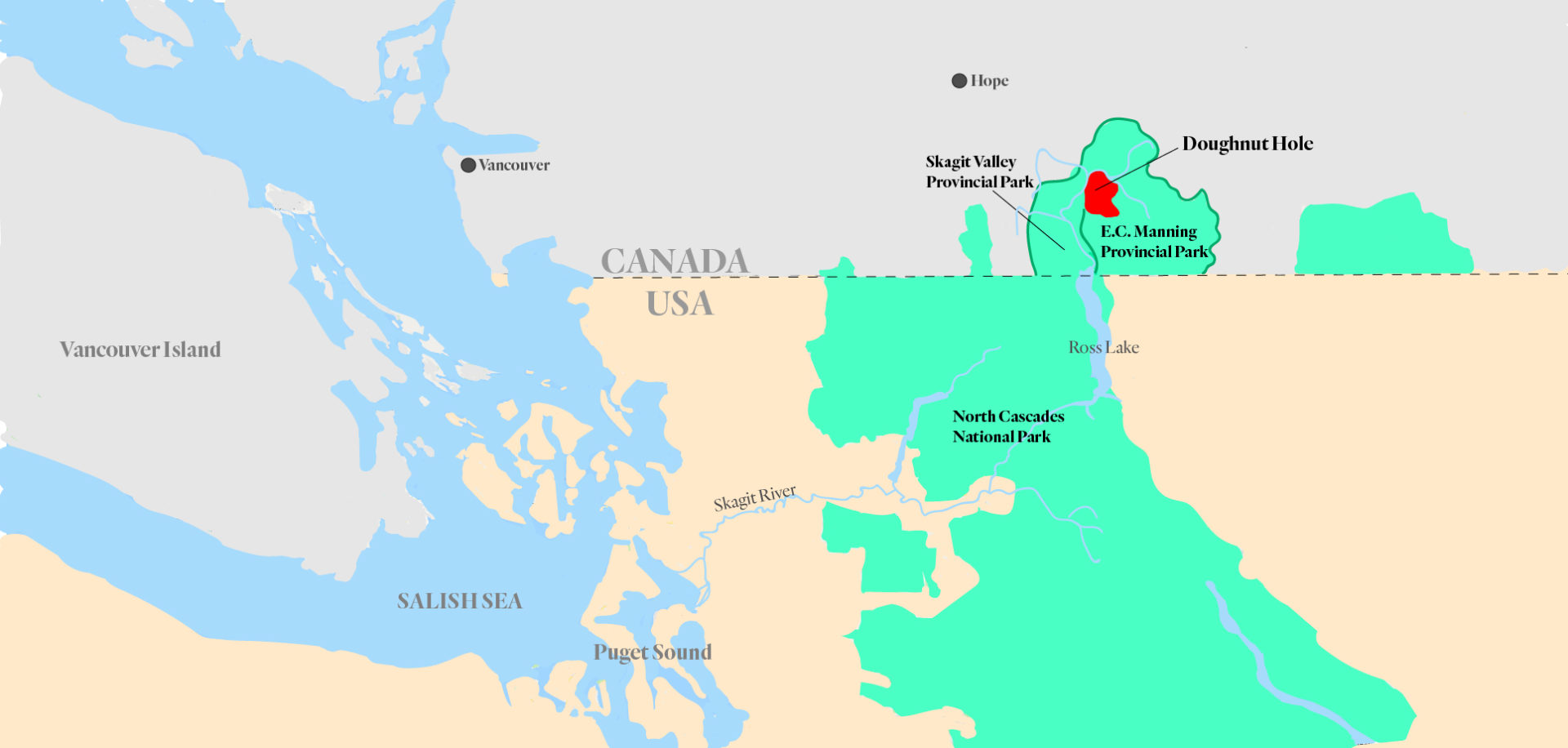
Map showing the location of the ‘Doughnut Hole’ between Skagit Valley and Manning provincial parks. The Doughnut Hole lies within the headwaters of the Skagit River. Map: Carol Linnitt / The Narwhal
The history, leading to the unprotected area in the middle of provincial parkland, is complicated.
In 1996 Skagit Valley was given a provincial park designation, merging the area with Manning Park, but, smack in the middle, a 6,000-hectare parcel — which became known as the Doughnut Hole — was left out because of mineral claims that have existed since the 1930s and most of which are held by Imperial Metals.
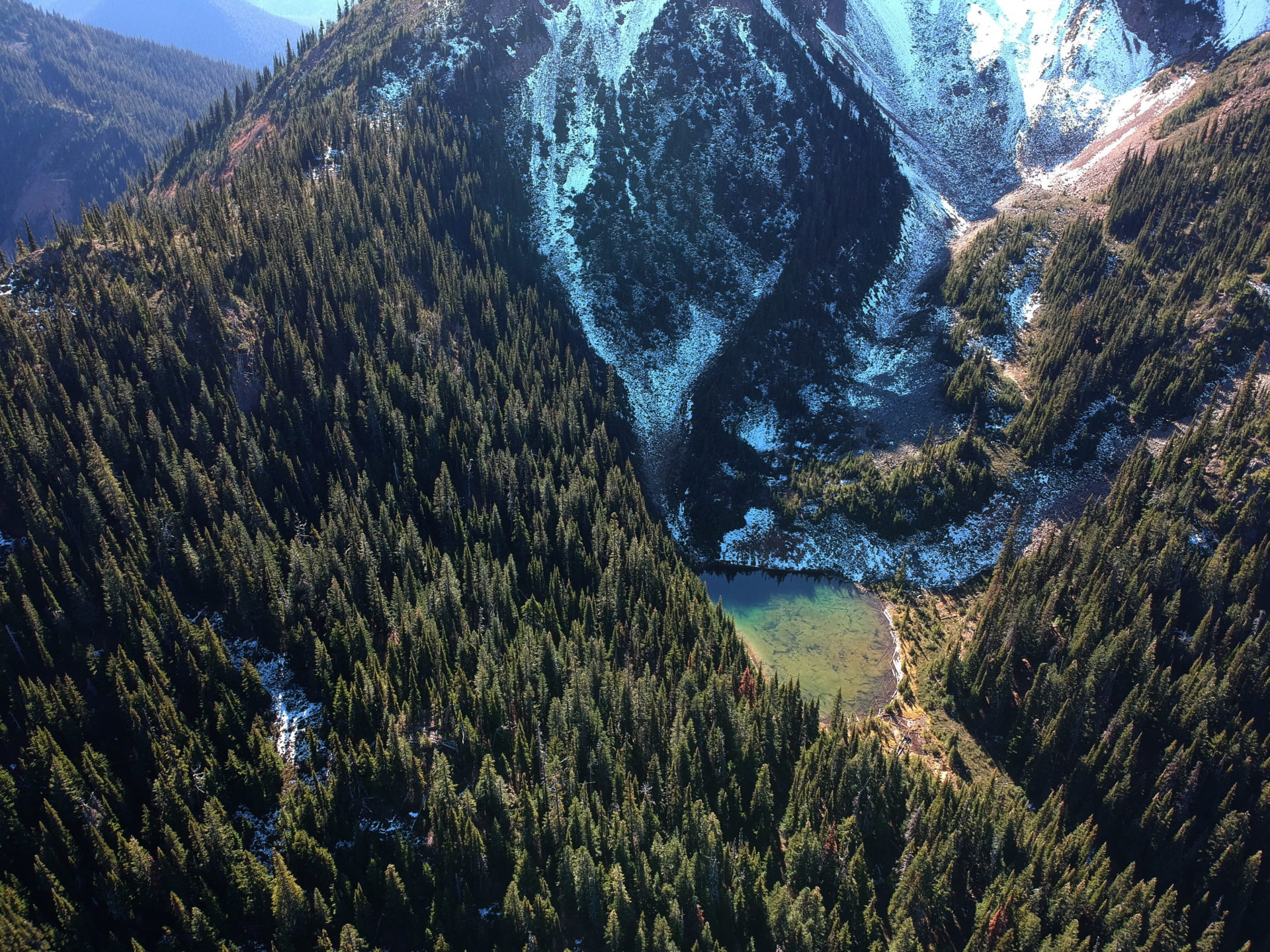
A small mountain lake, the source for the Silverdaisy Creek, is located just below the Smitheram-Silverdaisy pass in the Doughnut Hole. Photo: Wilderness Committee
The Skagit River flows from B.C., through Washington State to Puget Sound and is home to endangered bulltrout, in addition to salmon. Hydro dams on the lower reaches of the Skagit provide Seattle with much of its electricity.
The Skagit Environmental Endowment Commission has four members appointed by Seattle and four by B.C. with a mandate to conserve and protect the wilderness area in the watershed and to acquire mineral and timber rights in the Upper Skagit Watershed “consistent with conservation and recreational purposes.”
The High Ross Treaty came into being because of a public outcry in 1942 after Seattle negotiated an agreement with B.C. to raise the Ross Dam by 36 metres, which would have flooded more than 5,000 acres of prime B.C. wildlife habitat and recreational land.
The crux of the 1984 treaty, which ended decades of negotiations, is an agreement by Seattle City Light (the city’s publicly owned electricity utility) not to raise Ross Dam until 2065, in exchange for Canada providing cheap hydropower.
Despite the treaty, late last year B.C. quietly approved logging in the Doughnut Hole without alerting the commission.
The move brought a sharp rebuke from Seattle Mayor Jenny Durkan, who wrote to Premier John Horgan saying she was gravely concerned that fish in Washington state could be threatened and that the logging was “inconsistent with the spirit and intent” of the High Ross Treaty.
Durkan has now renewed her call to B.C. to abide by the treaty, saying in a statement that mining “would harm the integrity of a watershed that is critical to millions of people in Seattle and our region.”
In an emailed statement to The Narwhal, B.C.’s ministry of mines said senior officials are meeting regularly with their Seattle counterparts and members of the joint commission to “share information and understand their concerns.”
“The premier has also spoken with the mayor of Seattle and expressed B.C.’s interest in continuing to support an open and collaborative working relationship between the two jurisdictions,” the email said.
The ministry also told The Narwhal Imperial Metals’ application is being sent out for consultation and feedback from ministries and other agencies.
A public comment period is expected for early May, prior to a decision being made by an independent statutory decision maker.
In its application Imperial Metals noted it has not contacted First Nations, but a ministry spokesman said the province will be consulting “potentially affected First Nations.”
Imperial Metals, which did not return calls from The Narwhal, plans to use roads built during last year’s logging for access and has applied for a five-year exploration permit, with five surface trenches, drill pads and one or two “mother holes” of 2,000 metres, with “daughter holes” drilled directionally off the deep holes.
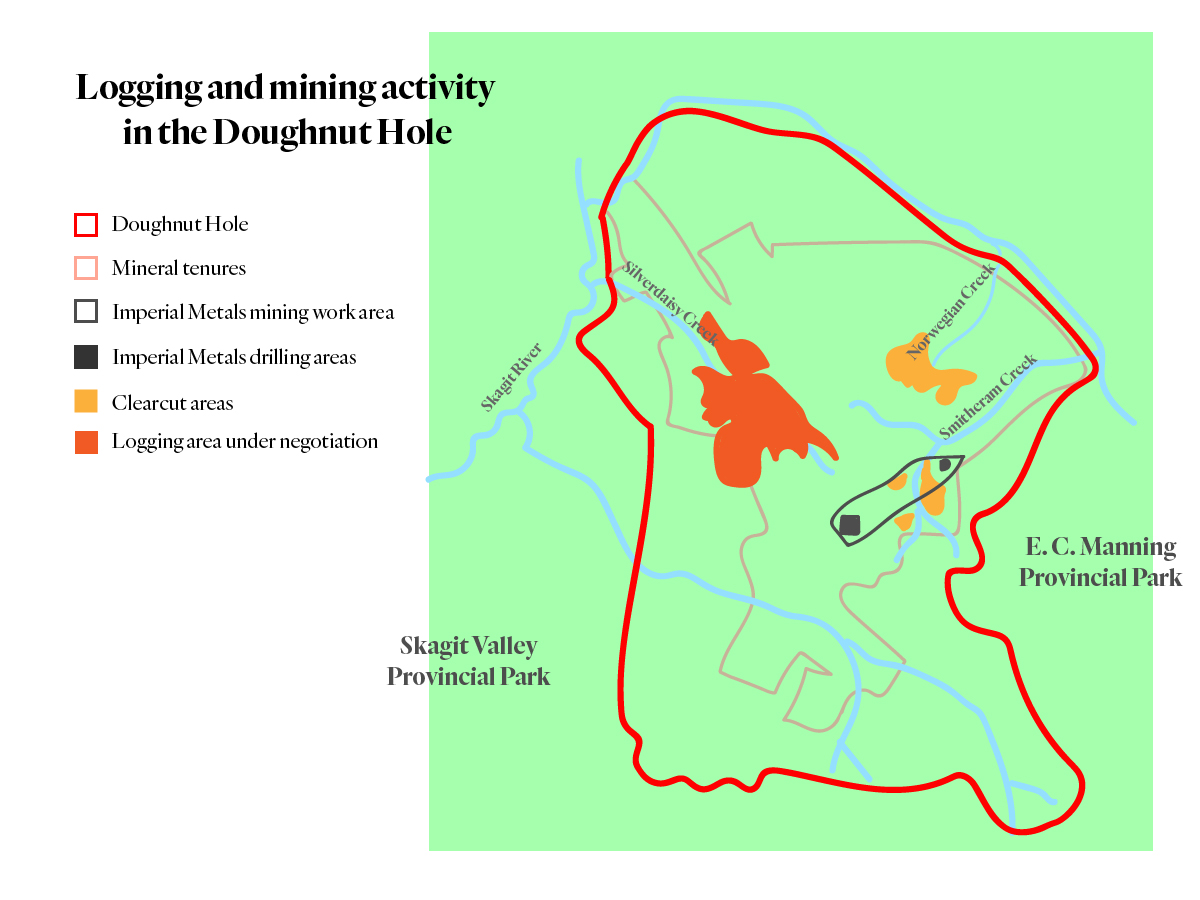
A detailed map of logging and mining areas in the Doughnut Hole area. Map: Carol Linnitt / The Narwhal
“The cuttings from the drill will be collected in a settling pond and the water recycled or a newly designed water recycling machine will be used to remove the cuttings for disposal,” the application states.
The commission has an opportunity to propose conditions for Imperial Metals’ permit, according to Bodensteiner, who said the group is considering whether one condition could require the closing of all existing logging roads.
“That would mean they would have to build their own roads, which would be financially prohibitive. It would call them out,” Bodensteiner said.
Two years ago, the commission paid for an economic report which indicated the proposed Giant Copper mine would not be economically feasible, Bodensteiner said. Imperial Metals has also struggled financially, with experts warning the company may be on the brink of bankruptcy, and the company selling off a 70 per cent stake in its Red Chris Mine to Australia’s Newcrest Mining.
Bodensteiner said that, in their meeting, Minister Mungall indicated she would be open to hearing the commission’s suggestions for conditions.
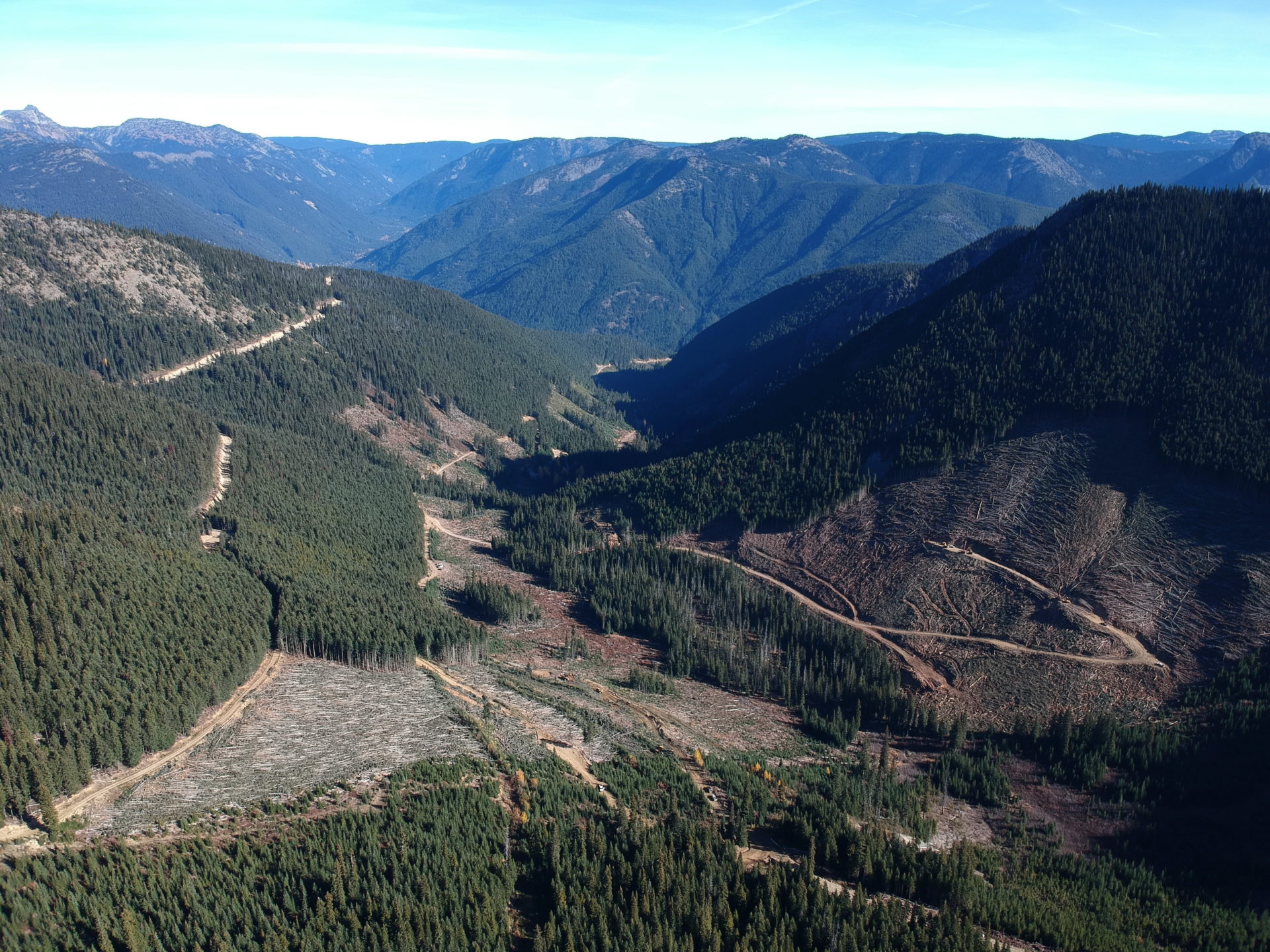
A clearcut in the Doughnut Hole. Imperial Metals proposes to extend the logging road to access sites for drilling and trenching. This photo was taken from Silverdaisy ridge, looking south into the protected lands of Manning Provincial Park and the U.S. Photo: Wilderness Committee
The application is already provoking strong reactions from both sides of the border.
A letter to the commission from more than 20 U.S. conservation, recreation and wildlife organizations sets out “strong opposition to any and all resource extraction activities” in the headwaters of the Skagit River, which supplies 30 per cent of the freshwater to the Puget Sound.
“Neither the previously allowed logging activities, pending timber sales, nor this latest mineral exploration permit are in alignment or in keeping with the spirit and intent of the Treaty,” says the letter, which is signed by groups such as Washington Wild, Washington Environmental Council and Save Our Wild Salmon Coalition.
“It is essential that all proposed or future timber sales … be permanently terminated and that the proposed mineral exploration permit be denied as these activities fundamentally risk and create irreparable harm to the entire Skagit watershed, including downstream impact in the United States,” it says.
The area is critical habitat for imperilled species such as bull trout, grizzly bears and spotted owls as well as supporting the largest populations of steelhead and Chinook salmon in Puget Sound, says the letter.
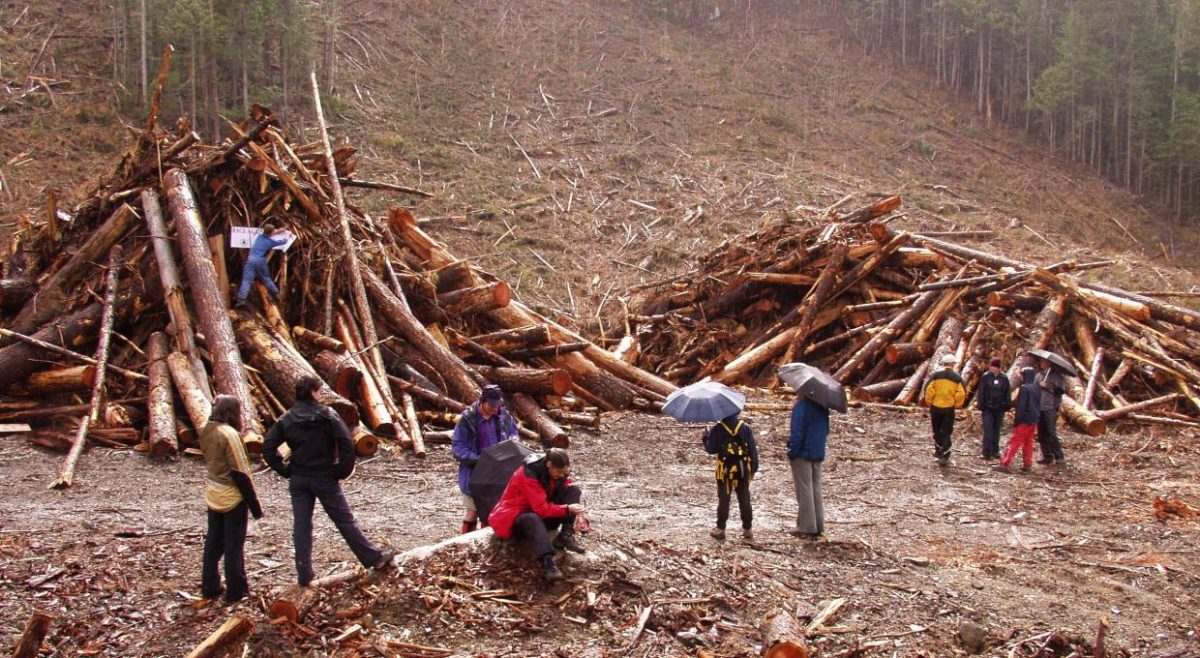
Slash piled at a clearcut in the Doughnut Hole beside Manning Park, in 2004. The clearcut area in this photo is within endangered spotted owl habitat. Photo: Wilderness Committee
“These fish are a critical food resource for the imperilled southern resident killer whales and are central to the culture and integrity of several tribes both in the United States and Canada who have treaty rights to these important resources.”
Canada’s Department of Fisheries and Oceans recently announced a number of measures, including fisheries closures, to protect Pacific chinook salmon stocks, which are experiencing distressing population declines.
Despite confusing timelines for public input, B.C.-based democracy group Dogwood Initiative has prepared an online petition headed “No Mount Polley in Manning Park” calling on the B.C. government to reject the exploration permit.
The petition, which already has 5,000 signatures, should serve as a warning to the province that there’s going to be a significant number of concerned British Columbians, said Dogwood’s communications director Kai Nagata, adding that reaction so far has been visceral.
“In light of Mount Polley and the ongoing contamination of Quesnel Lake and the sad attempt at a cleanup and the failure of accountability mechanisms, the public is extra concerned about this company building a full-scale, open-pit mine at the headwaters of the Skagit River,” he said.
“The idea that the company that is responsible for the Mount Polley disaster wants to put its dirty mitts anywhere near Manning Park is alarming to a great number of British Columbians,” Nagata said.
Dogwood is not opposed to mining, but mines have to be developed in a way that respects Indigenous rights and the taxpayers of B.C., Nagata said.
“What we have seen from Imperial Metals is they are all-too-willing to take advantage of the weaknesses and loopholes in B.C.’s mining laws to benefit their bottom line, so it’s an issue of trust,” he said.
Joe Foy, national campaign director for the Wilderness Committee, said it was a major problem when B.C. Timber Sales allowed logging in the area, but Imperial Metals looking for gold would be a nightmare.
“In our view, Imperial Metals, with the assistance of the [Skagit Environmental Endowment Commission], needs to be sitting down with the B.C. government and talking about how B.C. can regain control from Imperial Metals in the Doughnut Hole and the next thing that needs to happen is the Doughnut Hole and the rest of the Skagit need formal protection,” he said.
Since 2015 the commission has held discussions with Imperial Metals in an effort to purchase the mineral tenures, but has not yet been able to get a price from the company.
Some individuals, including Ken Farquharson, a former Canadian commissioner of the Skagit Environmental Endowment Commission, speculate the exploration application is a bargaining technique.
Farquharson, who was involved in the original efforts to protect the Skagit in the ’80s, said an evaluation of Imperial’s claims by a mining consultant concluded that copper deposits were small and there would be severe permitting problems.
However, Imperial is now claiming that last year’s logging road construction uncovered a gold vein they want to explore, Farquharson said.
“I think they should be entitled to do their exploration, because they still have a valid claim, but the time should be severely limited, say to six months,” he said.
There should also be strict restoration conditions, especially as Imperial has not yet cleaned up from its activities in the area in 1996, Farquharson said.
Even if exploration goes ahead, it is unlikely the Giant Copper mine will ever become a reality, he said.
“I don’t think any government would be able to stand up to the outcry … What we desperately need now is help to persuade Imperial, either through the government or from public opinion, to sit down and negotiate a price. Once we have a price we can talk about where the money will come from,” he said.
Get the inside scoop on The Narwhal’s environment and climate reporting by signing up for our free newsletter. Angello Johnson’s shoulders burn, and his arms...
Continue reading
First Nations are leading efforts to make sure lake sturgeon can find a home in...

We’re excited to share that an investigation by The Narwhal is a finalist for the...

A new documentary, Nechako: It Will Be a Big River Again, dives into how two...
